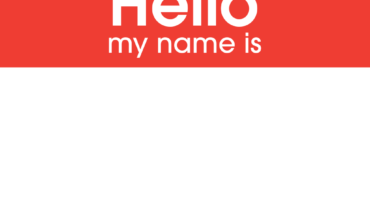Tom Stites and the Banyan Project: The Forest for the Trees
By Josh Wilson
Why would anyone give money to a journalist? Even during their heyday, organizations that actually did pay the wretches — be they ink-stained or coiffed for the TV camera — made their money off advertising more than direct audience payments. In other words, the value of the reporting got somehow abstracted from the enterprise that sustained the outlet.
Which brings us to our present predicament, to wit: In an era of Craigslist, citizen media, Twitter and Wikipedia, why would anyone give money to a journalist?
Because of trust in the person, and in the enterprise. Yet for Tom Stites — a self-described “ink-stained wretch” and founder of the still-nascent Banyan Project, a consumers’ co-op for news seekers — solving the trust puzzle is more than a matter of enabling a transaction with a good product and good service.
After all, there are plenty of reputable media companies out there selling quality news products. Why, then, the deepening crisis for news media?
* * * * *
Stites got his journalism start at The Kansas City Times in 1962, falling into an internship there after dropping out of Williams College at the end of his sophomore year. “I heard the call loud and clear,” he says.
What followed were a string of reporter and then editor positions — managing editor at The Kansas City Times, Night News Editor at The New York Times, National Editor at the Chicago Tribune — that took him straight to 1990, at which point, he said, “I left newsrooms.”
Was it true? After almost 30 years as a newspaperman? “People asked me why I was leaving journalism, and my stock answer was that I wasn’t leaving journalism, that it had left me.”
Stites says he was “deeply concerned that all the journalism from all the major news organizations was all the same … The Trib and any other newspaper where I might have worked just no longer fit my idea of a newspaper business I wanted to be part of.”
He found himself “yearning for journalism with a voice that diverged from the pack to value democracy and the people rather than the neoliberal policy thought that dominated all the rest of the press — except The Washington Times, which was dominated by neoconservative policy thought.”
Guided by a “chosen” spiritual faith in the Unitarian Church that resonated with his idealism about journalism — “it is nonhierarchical and creedless, stressing in its principles both ‘the right of conscience and use of the democratic process’ and ‘the free and responsible search of truth and meaning'” — Stites took a turn away from newsprint to become the editor, and later the publisher, of UU World Magazine, serving an active, English-speaking Unitarian community worldwide.
So the seeds for the Banyan Project were planted. But they didn’t begin to truly quicken till 2006, when Stites gave a speech that took his ideas out of the realm of individual conscience, and into a much broader dialogue.
* * * * *
I first encountered Stites in June 2006 at the first (and only) Media Giraffe Conference at the University of Massachusetts. He was giving the keynote presentation, a PowerPoint show with the promising, if wonky, title: “Is Media Performance Democracy’s Critical Issue?”
It was lunchtime. People were chatty, and distracted by food. Yet before long, Stites had them hanging on every word. He was talking about being the associate managing editor of The Chicago Tribune, and how “all the talk among the news management was about editing the paper for the top two quintiles of the income distribution. That means that 40 percent market penetration is the goal, not 100 percent, and that The Trib cares little about 60 percent of the people who might be its readers.”
News media was failing democracy, he said, because the needs of the advertising model were distorting the editorial mission.
“Instead of having sympathy for the poor our newspapers discard them,” he declared. “Newspapers have forgotten that less-than-affluent Americans are also citizens that require easy access to quality journalism that squarely addresses the issues that affect their lives. Unless we do, there’s a good chance that our democracy is doomed.”
This, in the middle of a buzzy conference with panels about citizen media, new technology, and ways to invigorate the ad model. I recall looking at my colleague, Michael Stoll of the commercial-free nonprofit startup The Public Press.
“Who is this guy?” I asked. Stoll blinked, then said, “We gotta get ‘im.”
After the conference, stopping over in Boston before heading back to California, Stoll and I paid a visit to Stites in his offices at UU World. He seemed, perhaps, the tiniest bit bemused by these two young idealists, talking nonprofit startup news projects and serving the underserved. By the end of the half-hour conversation, he said that it was a “joy” to know there was still such inspiration afoot in the journalism world. We invited him to join the advisory boards of our respective projects. Later, when the Banyan Project began to really take root, we returned the favor by becoming advisers to his efforts.
The nonprofit paper-chase followed. Everyone was writing grant proposals, by the ream. We traded “three-pagers” outlining our diverse plans, providing feedback, egging each other on. Amidst it all, Stites pursued studies as a resident fellow at the Harvard Divinity School, and worked as a consulting editor of the Center for Public Integrity. He was editor and principle writer of the Center’s Collateral Damage series about the impact of post-9/11 U.S. foreign policy — and the series won top awards from the Society of Professional Journalists and from Investigative Reporters and Editors.
Before long, though, Stites had assembled an impressive advisory team, including such leading lights as Dan Gillmor and Charles Lewis, as well as the lead Web developer for YouTube, who agreed to lead the platform-development.
Finally, his project — originally called Rhizome, after the networked root structures that allow plants to put up shoots far from the main body — acquired the name Banyan, for its central “metaphor” of a rich forest that really is just one single tree with a myriad sibling trunks and canopies spreading over the landscape.
* * * * *
What makes the Banyan Project a game changer? Trust. Not just trust in the transaction, but trust in the very processes by which an enterprise makes its product. If commercial newspapers have lost their way, it is because they have abandoned that trust — not their fiduciary responsibility to their shareholders, nor their sense of pride and quality control in the service. Rather, the nature of that service itself.
What good is a luxury car review to a single mother who’s struggling to make payments on a late-model minivan? What’s the value of a classical music review to a community that can’t afford a night at the symphony, and might not have interest in or even exposure to classical music? Whatever happened to the labor beat? Is it really just about reporting on unemployment statistics, or unions?
Through a mutual connection, Stites was introduced to Gar Alperovitz, a political economy professor at the University of Maryland-College Park, who opened his eyes about consumer co-ops.
“I quickly understood [this] to be the most trustworthy of business forms,” he said. The value proposition goes beyond pure journalism to include the deep relationship between the member and the producer, to drive relevance, dialogue, quality and loyalty.
Banyan is conceived of as a consumer’s co-op, in which members (the readers, the users, the “people formerly known as the audience”) are the owners of hyperlocal news sites that act independently, but are unified by standards and best practices. They serve the local, but also work as a network.
“Hyperlocal is crucial to journalism and at least as crucial to democracy,” says Stites. “It’s at the community level that civic engagement thrives. But journalists keep starting from scratch, or largely so, to reinvent the hyperlocal wheel, over and over and over. And we do this in a world whose economies are politics are dominated by multinational corporations bigger than most nations … Scale matters!”
Banyan, he says, will enable today’s “throng” of journalism entrepreneurs to not only strengthen the hyperlocal model, but also to “create larger-scale forms that have the resources to do quality reporting about far-flung stories of local impact and about issues and policy in ways that actually relate directly to people’s lives. This is the kind of enterprise journalism and democracy need, and need desperately, and need right now.”
Josh Wilson is the co-founder of Independent Arts & Media, and publisher of its Newsdesk.org project.



